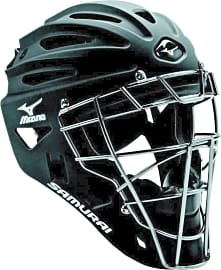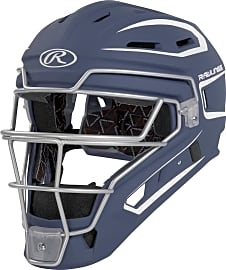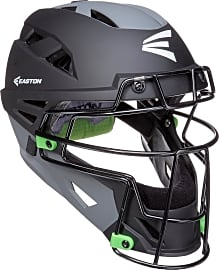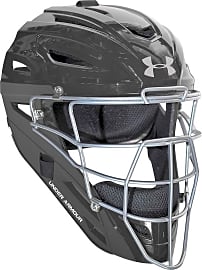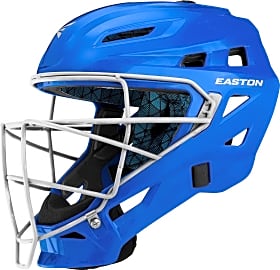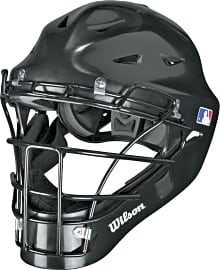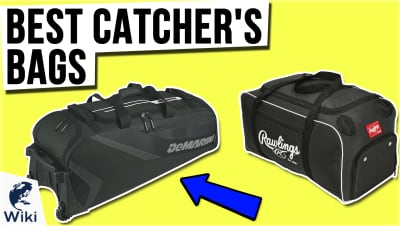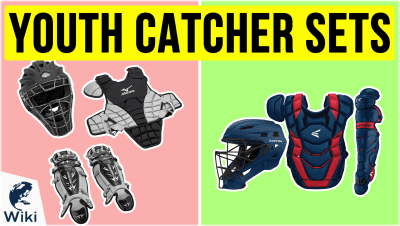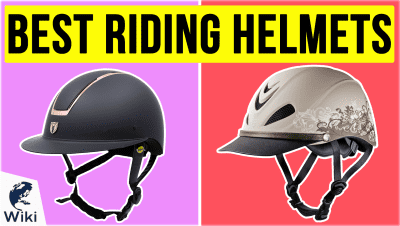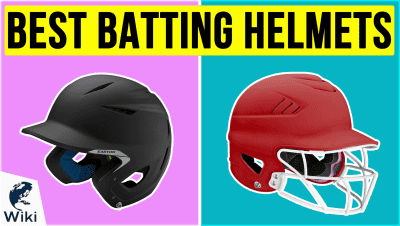The 7 Best Catcher's Helmets

This wiki has been updated 34 times since it was first published in October of 2016. It takes a brave individual to squat down behind home plate for the first time, but a good catcher's helmet can do wonders to bolster one's confidence. Our selections include options for players of all ages and head sizes, with designs ranging from stylish to understated. Those who want their helmet and mask to come as separate pieces will have to look elsewhere, though. When users buy our independently chosen editorial choices, we may earn commissions to help fund the Wiki.
Editor's Notes
July 09, 2020:
The first thing most people probably think of when they consider a catcher's helmet is protection, but the majority of the models on the market are going to do a good job with that, as most are made from ABS plastic, often injection molded to reduce or eliminate the occurrence of seams that could become weak points. So, it's important to consider other variables as well, most notably visibility. Catchers need to be able to see the field clearly at all times, especially when there are runners on who might try to steal. That why some offerings, like the All-Star MVP2500 and the Under Armour Professional utilize what's called an I-Bar opening around the eyes, which minimizes the amount of the cage that a catcher will have in their central or peripheral vision.
Moisture-wicking materials and antimicrobial agents have come a long way in recent years, as well, so to keep sweat from getting into your eyes, you could look to something like the Easton Gametime, the lining in which draws moisture away from your head. And that Under Armour model also has a Aegis antimicrobial treatment, which is ideal if you tend to leave your gear in the bag for extended periods and you don't want anything nasty to set in.
Evolution Of Catcher's Helmets
By the mid-1880s, catchers were also sporting padded chest protectors and specialized mitts on their non-throwing hands.
Catchers today are better protected than they've ever been before — which is good, because for the majority of baseball history, they've had very little protection at all.
When baseball was first invented, in the mid-19th century C.E., pitchers threw underhanded. As a result, many swings resulted in high pop-ups, and so catchers would play 20 feet behind the batter. They had no protective equipment whatsoever — not even a glove.
After the Civil War, baseball was serious enough that pitchers began to want to prevent batters from hitting the ball in the first place, and they started throwing overhanded. Catchers moved up closer to the plate, only a few feet behind the batter.
Since pitchers were starting to bring the heat, backstops began to wear padded, fingerless gloves to handle the ball. Face masks and rubber mouth guards started popping up, as well, although catchers who wore them were occasionally ridiculed. By the mid-1880s, catchers were also sporting padded chest protectors and specialized mitts on their non-throwing hands.
In 1907, New York Giants catcher Roger Bresnahan made quite a fashion statement when he showed up wearing thick shin guards. The reaction from the crowd was...unpleasant, to say the least. They openly mocked him and essentially called him a coward, but Bresnahan valued his paycheck more than their respect — and he only got paid if he was healthy enough to play.
While this marked the end of new innovations in equipment, the existing gear kept evolving. The first masks were padded on the sides, with wire cages in front. They offered protection from errant foul balls, and they also obscured the catcher's vision — which is dangerous when you have a runner barreling down on you from third.
Originally, catchers caught the ball two-handed, which caused them to tuck their chin on the catch. Once they started catching one-handed, their throats were left exposed, and in 1976, All-Star catcher Steve Yeager was almost killed when a piece of a shattered bat became lodged in his neck. As a result, throat protectors began to be installed on most masks.
The next breakthrough actually came from a completely different sport, as masks began to mimic the helmets worn by hockey goalies. These were made of high-tech polycarbon, and they offered protection to the head and neck while giving the catcher the least-obstructed view yet.
However, while they were thin and offered lots of coverage, these masks do less to prevent concussions in the event of a collision at home plate. This has led to a debate in the catching community, as some backstops prefer the thin, light polycarbonate models, while others put their trust in the heavier titanium models.
Hopefully, there will be new breakthroughs on the horizon, so that players won't have to choose what kind of protection they want — and what injuries they're willing to risk.
Finding The Right Helmet For You
Choosing the right gear is one of the most important decisions you can make as a baseball player. Inferior gear can impact your performance — and leave you vulnerable to injury.
Choosing the right gear is one of the most important decisions you can make as a baseball player.
When choosing a catcher's helmet, your first decision is between the traditional two-piece and a hockey-style mask. Two-piece models are believed to be superior for preventing concussions, but many leagues are making rule changes in order to ensure that collisions are less likely in the first place. If that's the case for your league, you should strongly consider a hockey-style mask.
Choosing the right size should be easy, since most manufacturers only offer them in children and adult. From there, it's a matter of adjusting straps to customize the fit to your noggin. This also makes it easier for multiple players to share a single helmet.
While you're trying it on, make sure you can see out of it and that it doesn't obstruct your peripheral vision. Also, check how easy it is to pull off, because a stubborn mask can impact your ability to catch a foul ball.
You can buy complete catcher sets, and that's fine for a casual player, but if you're serious about the game, it's probably best to shop for each piece of gear individually — and nothing is more important than your helmet.
Is Playing Catcher Safe?
Due to injury concerns, more and more parents are steering their kids away from violent sports like football towards games that seem safer — like baseball and soccer. However, since soccer is surprisingly bad for concussions, it's worth asking: is baseball actually safe?
Your style of play also affects your chances of staying healthy.
Generally speaking, yes, it is. There are always freak accidents, but that's a risk you take just getting out of bed in the morning. However, not all positions are at equal risk — and unfortunately, the catcher is the most vulnerable.
The biggest danger for most catchers comes from wild pitches, rogue foul balls, and the occasional misplaced swing. That's why finding the right gear is so critical — each piece has been specifically designed to protect from a certain danger, so make sure you've got NOCSAE-certified equipment that's comfortable and well-fitting.
Your style of play also affects your chances of staying healthy. If you really like to crowd the batter, well, you run the risk of taking a bat to the face. Likewise, if you never cede the plate to a runner, you're going to get in a serious collision sooner or later. However, many leagues now forbid catchers from blocking the plate for this very reason, and it only takes a few swings to the face to convince most backstops to back up a little bit.
At the end of the day, there's no way to be completely safe while playing baseball — or any other sport. The risks are low, however, and the benefits almost certainly outweigh them, so load up on gear and go have fun out there.
Oh, and don't stop trash talking those batters. We need every edge we can get.


